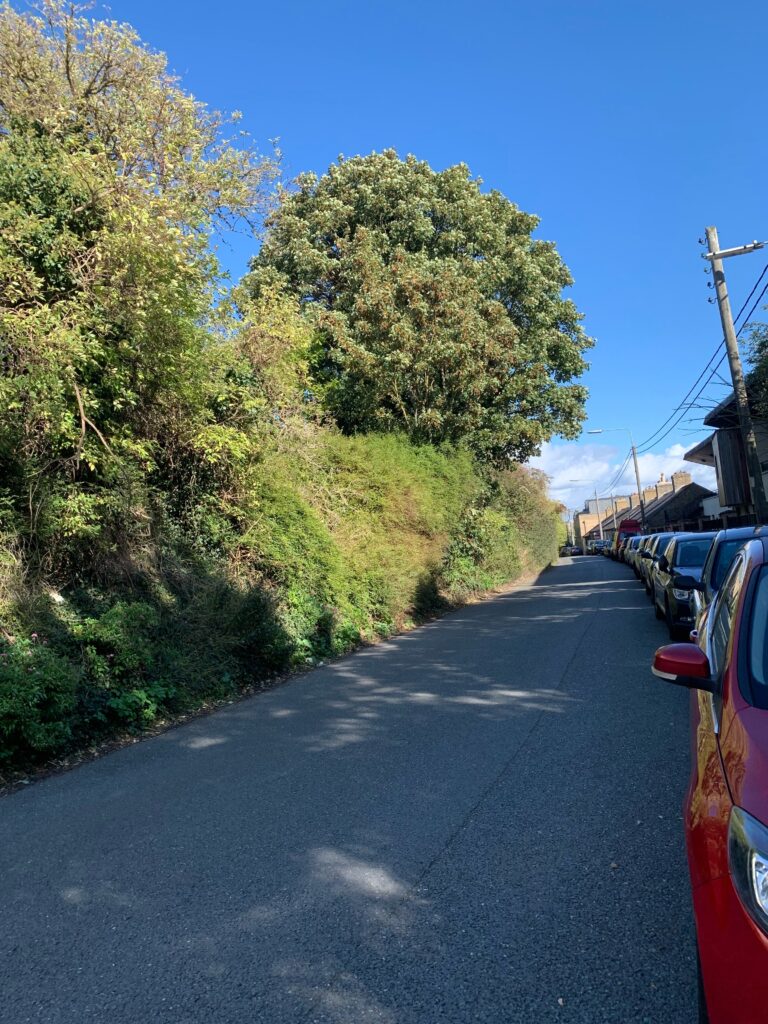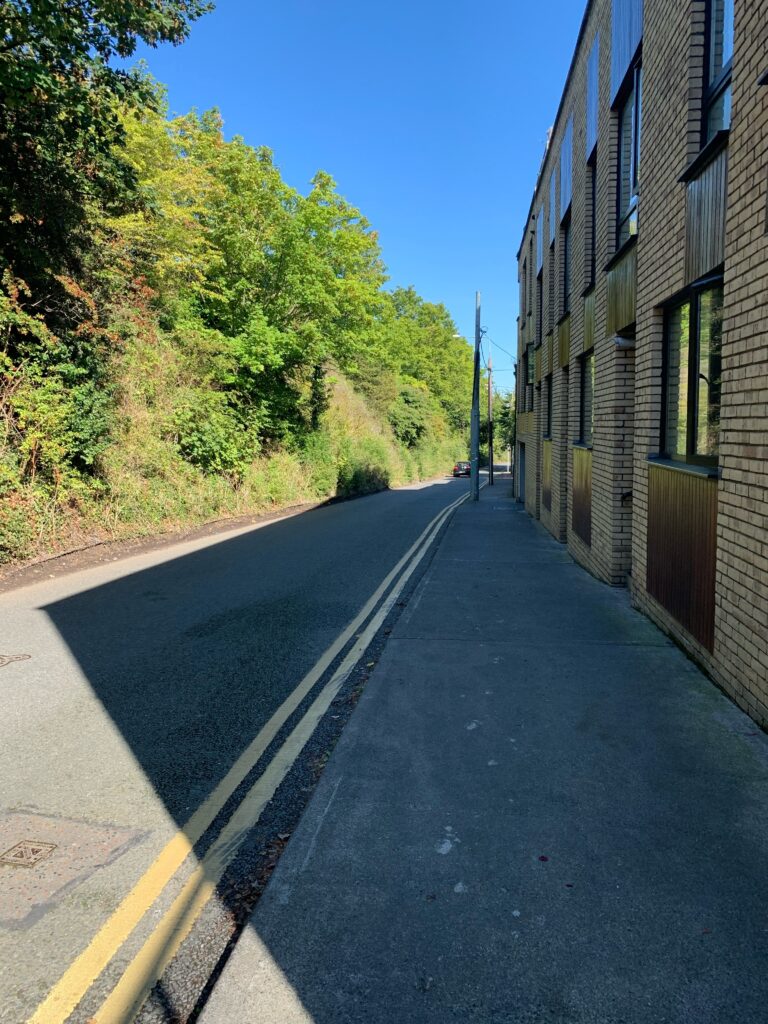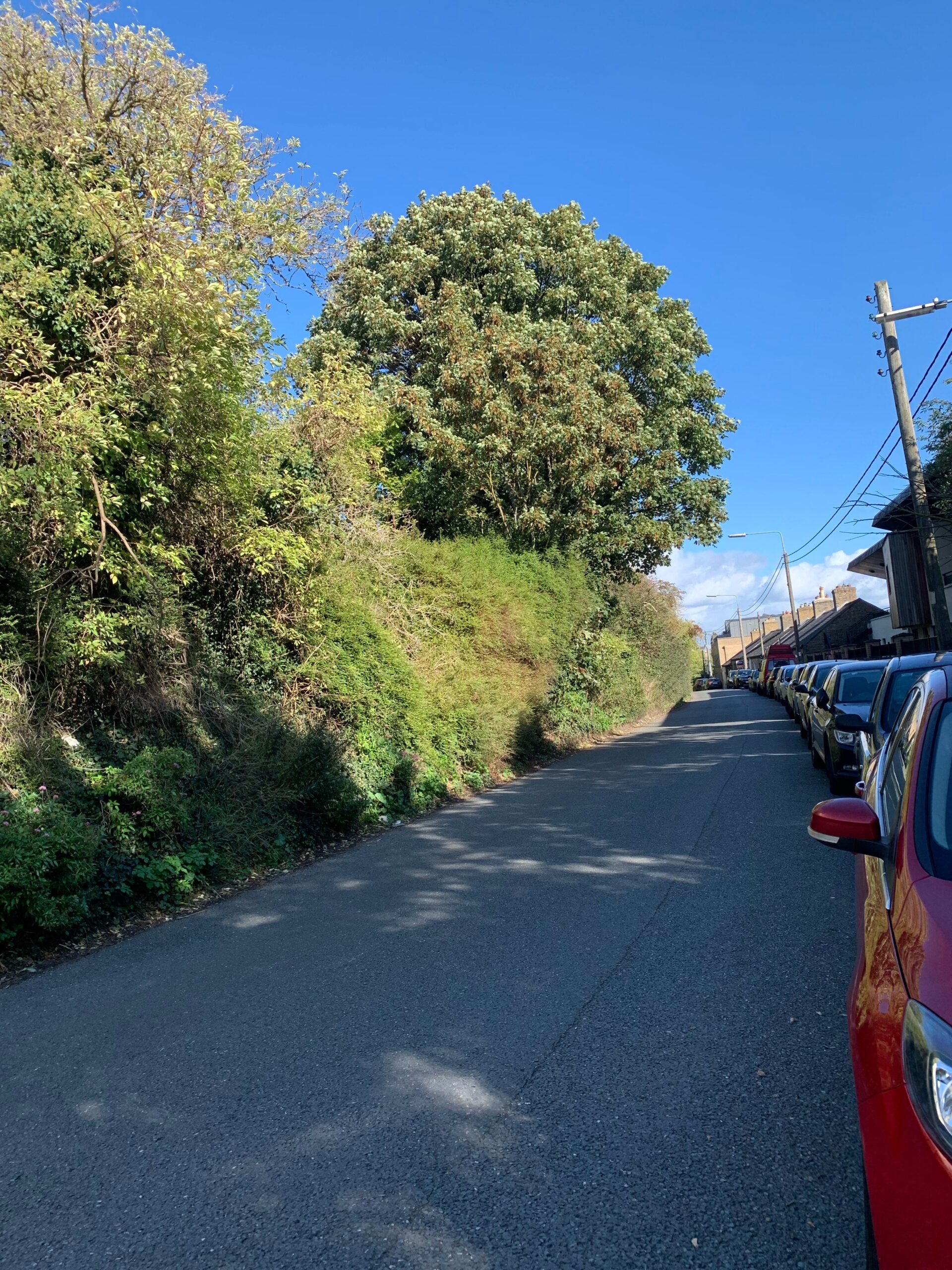Alexandria Charmoli
Why is it a novel ecosystem and informal wild space?
An informal wild space (IWS) is a type of urban novel ecosystem where plant and animal species have the ability to self-regulate and do not depend on continued human intervention for maintenance.
What was studied?
This research project was focused on Dublin residents’ and visitors’ perceptions and values of the novel ecosystem on Kilmainham Lane. This was a case study and the first in Ireland to focus on the people-place relationship between an informal wild space and Dublin residents and visitors. The studied focused on three main research questions:
- How do people perceive or value the informal wild space?
- What are the benefits and drawbacks of the informal wild space for the local area?
- How do people prefer the novel ecosystem to be managed and/or protected?
How was it studied?
A sample was asked questions through two survey formats: in-person questionnaire and online survey. The link to the online survey was available on flyers on street posts along the lane, distributed to residents’ letterboxes, and posted on social media on Twitter and Reddit. All survey respondents were anonymous. The in-person questionnaire was conducted on Kilmainham Lane on Wednesdays and Saturdays at various times of day during September and October 2022. Passers-by were asked 5 short questions while across from the novel ecosystem. Data analysis was then performed including qualitative analysis of the open responses using Nvivo 12 and inductive coding methods.

What were the results?
The online survey had 35 respondents and the in-person questionnaire had 32 respondents. The following table lists key findings from the study, as related to the objective themes studied: perception, values, benefits, drawbacks, and management.
| Key Findings | Research Objective |
| 1. Majority of respondents saw the Kilmainham Lane informal wild space as a local urban green space with higher abundance and diversity of wildlife. The space is seen as rare in Dublin, and often compared to the countryside. | Perception |
| 2. Untidiness, homeless people squatting, and overgrown vegetation were the most common negative perceptions of the wild area. | Perception |
| 3. Many respondents saw the space as a valuable feature of the area because the enjoyment it brings them and in relation to the impacts of climate change. | Value |
| 4. Respondents in both the online survey and in-person questionnaire wanted more green spaces in their local area (2 km radius around home). | Value |
| 5. The Kilmainham Lane space is seen to have biodiversity and ecosystem services benefits but is not used as a space for human activity. | Benefits |
| 6. The biggest drawbacks in the people-place relationship with the wild area were the littering and the interaction between the space and the road. | Drawbacks |
| 7. The preferred management strategies of the space according to respondents is to keep the area wild and unmanaged for the foreseeable future. Many would like the space to be protected. | Management |
| 8. Dublin City Council cleaning away the litter and housing homeless individuals living in the space was desired by many respondents. | Management |
Majority of respondents viewed the Kilmainham Lane wild space as an urban green space and majority of the sentiment towards the space was positive. The space was considered a more authentic or “real” form of nature and often compared to the countryside. The contrast of the developed city and the wild area were highlighted. Respondents assigned cultural ecosystem services to the novel ecosystem and described the space as “historic”.
For benefits of the space, many agreed that the space provides ecosystem services like lowering pollution and cooling urban heat. Respondents also spoke to biodiversity like plants and birds living in the area. For drawbacks, respondents said there was a lot of litter in the space and homeless people were living in it. Many respondents connected the wild area to the road it sits next to and said the vegetation scratches cars and cyclists. Some respondents viewed the road and the novel ecosystem as one space, while others thought the road should be changed to minimise interactions with the novel ecosystem.
The preferred management strategy varied by respondent. The management strategy most supported by respondents was that the space should remain wild or unmanaged for the foreseeable future with 81% of respondents agreeing or strongly agreeing. Others wanted to further formalise the wild area by adding benches and paths or changing the vegetation, often describing a desire to make it “tidier”. This may also indicate humans have high exposure to formally managed green spaces over unmanaged green spaces, making terms like weeds and overgrown more commonplace and seemingly valid. A minority of respondents wanted the space developed and cleared of vegetation. Many shared the sentiment, the more green spaces in cities, the better, but an obvious balance in housing and the type of green space must be met.

Why was the study important?
This case study informs policymakers, city officials, and Dublin residents about the perceptions and values of the informal wild space on Kilmainham Lane. It also begins to fill the gap of research on the people-place relationship between Dublin inhabitants and urban novel ecosystems. This research can help city officials like Dublin City Council and Irish policymakers on how to utilise urban novel ecosystems in biodiversity and greening strategies, providing more ways to conserve urban biodiversity and align with EU climate change policies.
This study highlights the importance of residents and visitors in cities have in influencing development and conservation. Residents play a vital role in advocating for novel ecosystem expansion, management, and conservation. Their perceptions and values of these spaces can influence local, regional, and national policymakers’ actions.
Lastly, this study is the first of its kind in Ireland and can be further expanded to create comprehensive insight into the people-place relationship with novel ecosystems. Requiring studies like this to occur in biodiversity, greening, and development planning will ensure city inhabitants actively participate in climate change mitigation and adaptation strategies and increase the public’s support and likelihood of success of future strategies.
Further research questions?
How does the people-place relationship with the Kilmainham Lane novel ecosystem compare with other novel ecosystems in Dublin or in other cities?
How does the people-place relationship with the Kilmainham Lane novel ecosystem change over time?
How does the people-place relationship with the Kilmainham Lane novel ecosystem compare with novel ecosystems without public access and are barricaded from public view?
How can ecosystem services provided by novel ecosystems be quantified and valued?
